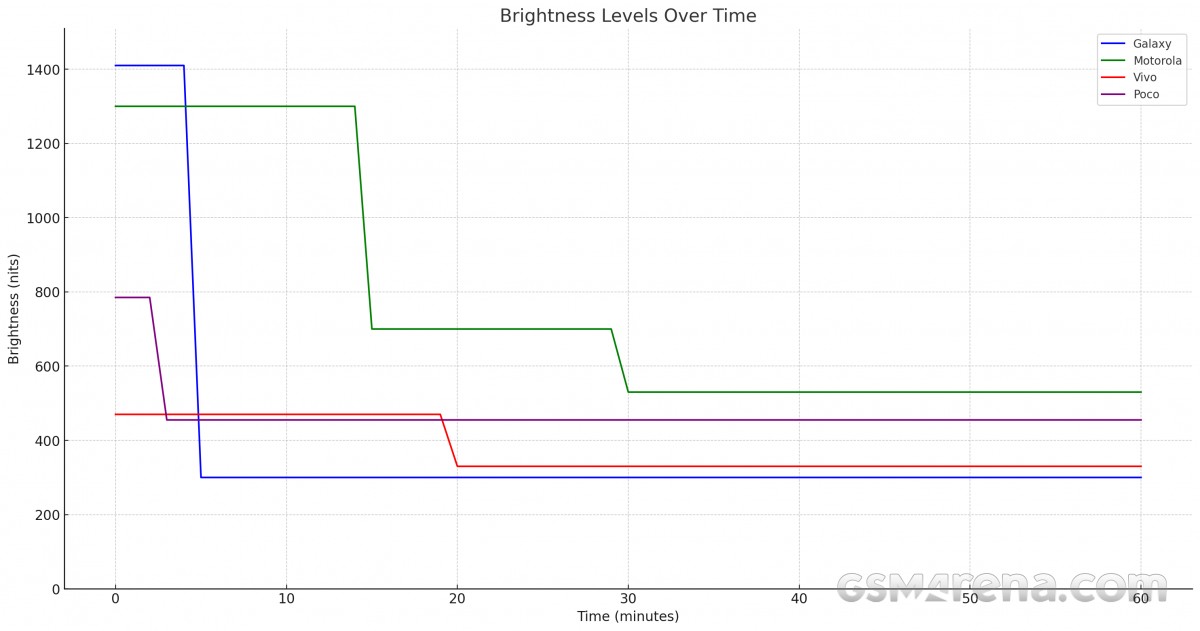Ah, summer… the best of all seasons. That is, if you live where it actually is and have a soft spot for sand and sea – otherwise you might see things differently. But regardless of whether we rush to the sea with enthusiasm or are dragged there by force by… external circumstances, it’s time for the beach where most of our team calls home.
We’ve no doubt you’ve experienced the detrimental effects of sunlight and its accompanying heat on your phone’s screen brightness and battery life, and we’re no strangers to those effects either. Still, we didn’t have a numerical representation of just how much worse a phone’s lifespan is in these, in many ways, unfavorable conditions – the subjective judgments or anecdotal reports of others don’t really count. So we thought we’d do a little test.

In general, any attempt to approximate a real phenomenon with some kind of technical model will contain errors. We thought long and hard about how to simulate smartphone use on the beach, then we did some preliminary tests with different setups, and this is what we came up with.
We put the phones out there in the sun, with no shade or anything like that. For a first attempt, we had them under a diffuser (to simulate a beach umbrella), but that gave unsatisfactory results when it came to maximizing the ambient light sensor and increasing the actual maximum brightness of the phones (as long as it would maintain that).
The ambient temperature was 30°C (86°F), and the test surface the phones were placed on reached a temperature of around 115°F (mid 40s). There was a moderate breeze blowing throughout the test, and the occasional cloud broke the torture for a minute or two – very welcome conditions that brought our setup a little closer to the reality we were trying to emulate.

We’ve picked four phones from different walks of life with some additional reasoning behind our picks. The Galaxy S24 Ultra, for example, is in some ways the pinnacle of smartphone screen tech – thanks in no small part to the glass over the actual display. The vivo X100 Ultra, though only released in China, has one of the highest peak brightness levels we’ve measured in our usual testing routine. The Poco F6 Pro and Motorola Edge 50 Pro, meanwhile, are representatives of Team Mainstream – relatively affordable handsets for regular people (as opposed to “photography enthusiasts”, or “mobile gamers”, or “fashionistas”, or “pick your own label”).

We laid them face down on the test bench for half an hour to acclimatize before we started the test – you know, you get to the beach, grab a coffee, go in and test the water temperature – the mindless scrolling comes later. Because they’re all light colored, the acclimatization process didn’t harm any of them.
We then flipped them over, set the brightness to adaptive/auto, and ran our usual web browsing script, supplemented with an extra page in between the normal pages that is plain white – for average brightness measurements. A ROG Phone 8 Pro was tasked with capturing the process in a timelapse video.

When we could actually start the test, 3 out of 4 phones were already so warm that they no longer wanted to set the brightness to maximum. Only the Motorola kept trying.
The brightness behavior graphs are indeed an interesting topic in themselves, but we’ll summarize them for you. The Galaxy dropped to just under 300 nits about 5 minutes into the test and stayed there the entire time.
The Motorola remained brightest throughout the test, reaching around 1300 nits for about 15 minutes, then 700 nits for another 15 minutes, before stabilizing at around 530 nits after half an hour and staying there.
The Vivo started the test at 470 nits and dropped to 330 nits after about 20 minutes, where it stayed until the end.
The Poco was most pleased with 455 nits, which it reached about 3 minutes into the test after starting at 785 nits.

With that in mind, here’s what we got battery life-wise from our test subjects. For comparison, we have the phones’ results from the regular review process, where the test is conducted at a standardized brightness of 200 nits.
In a way, the results of this test were a bit of a surprise to us, as we generally thought that our phones would drain a lot faster on the beach than they would during “normal” use. You could argue that the disproportionately larger drop in the vivo’s case compared to the others is what we’d expect. But it turns out to be an outlier in this varied (although admittedly small) sample group.
You’ll have to trust us on this one, because it’s essentially impossible to capture in a photo or video, but all of the phones remained easily readable during testing. That’s another anecdotal observation we tried to avoid, but it’s hard to convey in a visual format. There’s also the matter of the phones having additional, different means of dealing with bright ambient light beyond just boosting the screen brightness, like the Galaxy’s anti-reflective glass or sun-specific tone curves.
We’ll quickly admit that our test involves a lot of variables, and while it may be moderately representative of the usage scenario we were trying to emulate, it could very well be a far cry from how you spend your days at the beach. The effects of shade, ambient temperature, wind, frequency and duration of use, actual apps used, and who knows what else are difficult to measure, isolate, and control for.

Calling on our inner philosophers, we conclude that if you’re out in the sun, you should probably enjoy it and not spend your time on your phone. But it’s nice to know that your smartphone is there for you when you need it – sun or no sun.
